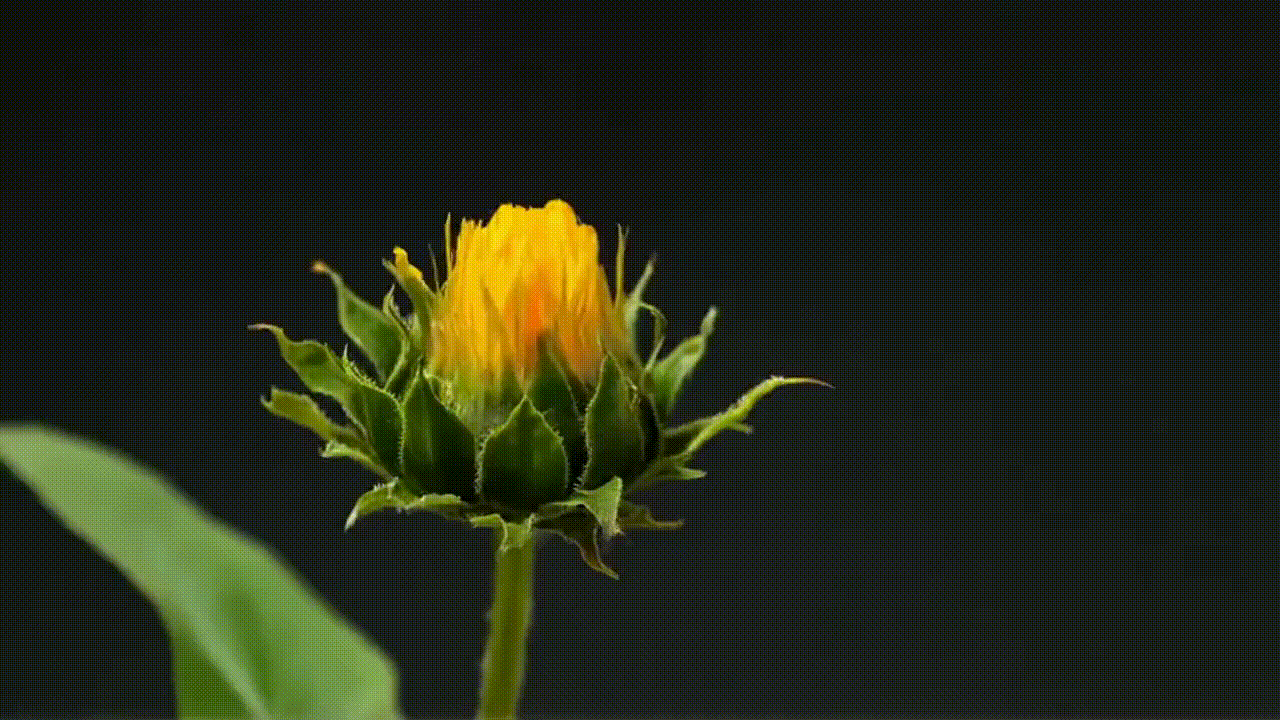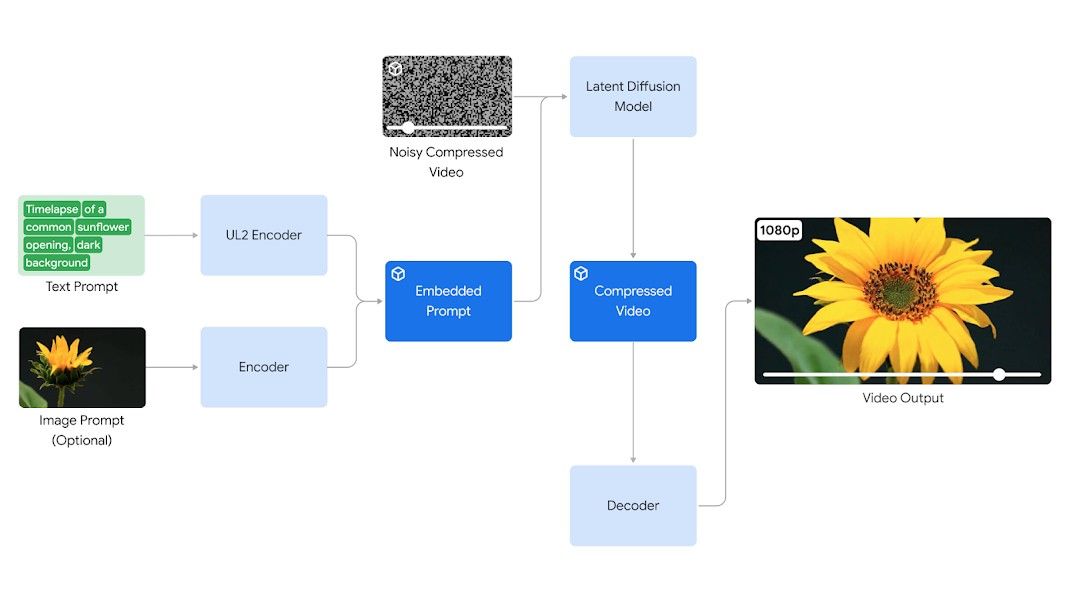Generative AI models, like Bing Image Creator and Google Images, made headlines in 2023. These AI models were integrated into Google Pixel phones with features like Reimagine. But the tech world never stands still, and the focus has shifted to artificial intelligence video generation. OpenAI jumped ahead, introducing its text-to-video tool, Sora, in February 2024. Now, Google is stepping up the competition. Let’s look at Google Veo, its video generation tool.
Google Veo: Turning text into video
Google Veo, introduced at Google I/O 2024, is an AI video generator that turns text prompts and visual references into videos. It creates 1080p videos that last more than a minute, using language processing and visual rendering to produce realistic scenes. It also interprets detailed instructions to add effects like time-lapse, slow motion, or other cinematic touches. For example, a prompt like a time-lapse of a flower opening produces a polished, professional video. You can also fine-tune the video results by adding more prompts.
Source: Google
Image-based video creation
Alongside text prompts, Veo combines images with text to generate videos that carry the visual style of your image. This feature is ideal for creators looking to maintain a consistent visual style across their projects or add motion to static visuals.
Masked editing capabilities
Google Veo includes a masked editing feature that modifies specific areas of a video without affecting the entire scene. For example, in a beautiful drone shot of a coastline, you might want to add kayaks to the water. Veo does this without changing the rest of the video.
Consistent frame generation
Thanks to latent diffusion transformers, Google Veo keeps visual elements consistent across video frames. For example, when working on a video with complex movements, like a car driving through a cityscape, Veo keeps the car consistent from one shot to the next. This feature leads to a fluid, professional video, allowing creators to produce high-quality content with fewer technical glitches.
Extended video length
Google Veo’s ability to generate videos over sixty seconds in length opens new possibilities for storytelling. Combining prompts allows you to create a continuous narrative that adds depth to your video projects. For example, you can make a video that tells a story in chapters, such as a day in the life of a city, from sunrise to sunset, within one continuous video. It’s an excellent tool for adding structure and flow to longer projects.
Advanced filmmaking potential
Google Veo understands cinematic terms and seamlessly integrates these elements into your video. You can prompt filmmaking instructions that let you add professional effects like closeup shots or panning sequences.
In partnership with Google, Donald Glover and his studio Gilga explored Google Veo’s filmmaking capabilities. They experimented with creative techniques like dynamic tracking shots, where precise camera movements and consistent framing are fundamental. The partnership highlights Veo’s potential in pushing creative boundaries within the film industry.
The technology behind Google Veo
Google Veo is built on years of research from earlier projects like Generative Query Networks (GQN), Imagen-Video, Transformer models, and Gemini. These projects helped Veo interpret prompts with impressive accuracy, generate realistic motion (even with physics simulations), and ensure frame consistency to avoid flickering or object morphing. Here’s how the architecture works.
Input and encoding
When you provide a text prompt (optionally, an image prompt), Google Veo uses separate encoders for each. The text is processed using a UL2 encoder, while the image (if provided) goes through a dedicated image encoder. The outputs from these encoders combine into a single embedded prompt, which acts as the input for video generation.
Latent diffusion
The embedded prompt passes through a latent diffusion model, which generates compressed video frames from the embedded representation. This allows Veo to create videos quickly and efficiently without sacrificing visual detail.
Decoding and output
After generating the latent video, a decoding step turns the compressed representation into a full 1080p video. This process ensures the final output is clear, visually stable, and coherent throughout the video sequence.
Source: Google
How to access Google Veo and join the waitlist
Google Veo is accessible to a small group of creators, with public access pending. It’s being rolled out through VideoFX, a new experimental tool in Google Labs. Creators who want to get their hands on it early can join a waitlist to test and explore the platform.
While Veo is in limited preview for select creators, Google hinted that its text-to-video generation and editing tools might be added to YouTube Shorts and other products.
Google Veo prevents misuse with built-in safety features
Google Veo is responsible by design and includes multiple safety features to ensure responsible use. One key tool is SynthID, which embeds a unique watermark into AI-generated videos. This allows the content to be identified as AI-created, preventing misuse and offering transparency regarding where the media comes from.
On top of that, Veo has built-in protection against bias, copyright, and privacy through memorization checks. This ensures the model doesn’t accidentally reproduce copyrighted material or sensitive data, keeping generated videos original and compliant with legal standards. Filters are in place to block inappropriate or harmful content.
Exploring the future: Potential uses for Google Veo
With the anticipated introduction of Google Veo, several industries could be on the brink of transformation. Let’s explore the sectors where Google Veo could make an impact.
Marketing and advertising
Google Veo could be a game-changer in marketing by automating the creation of dynamic, personalized video ads tailored to viewer preferences. Brands could use Veo to tell stories that resonate emotionally, strengthening their brand identity by building a deeper connection with their audience.
Education
Google Veo could make educational content more interactive and illustrative. This tool can break down complex subjects into understandable segments through engaging visuals and animations, making learning more accessible and enjoyable for students of all ages.
Entertainment
Google Veo could transform how content is produced for social media and streaming services by tackling complex scene production head-on. Typically, expensive and challenging scenes could be accessible and cost-effective to film with Veo. Its potential in developing interactive media could provide novel experiences in video games and virtual reality.
A new era in AI video creation is coming
Google Veo marks a step forward in generative AI technology. The anticipation builds as we eagerly await its release. Who will emerge as the leader in the generative video model space? Will it be OpenAI, or will Google take the mantle? The competition is heating up, and we can’t wait to explore each platform firsthand.
Source link




